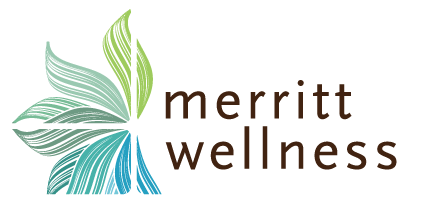Cleansing, once reserved for the eccentric and ultra-health-conscious has become a HUGE trend in healthcare.
It seems every time we turn around, there’s a new cleanse, detox, elimination diet, or cure-all program being touted as “the” way to lose weight, look younger, and live longer.
But, despite its newfound fame, cleansing is still controversial, misunderstood, and (sadly) promoted with a lot of half-truths.
In today’s article, we will explain and expose the top 5 cleansing detox myths including who should and shouldn’t cleanse, which type of cleanses work…and don’t, how and why cleansing really works (it’s not what you think!), and much more.
Cleansing Detox Myth #1: Everyone should do a cleanse
Our world is toxic, our food is processed, and we’re all suffering from stress-related issues…therefore everyone should do a cleanse.
This is a myth.
Though it’s true we are exposed to thousands more chemicals, toxins, pharmaceuticals, stressors, and junk foods than previous generations, cleansing is NOT appropriate for everyone.
Who should NOT do a cleanse?
It depends on the type of cleanse you’re talking about. But generally the following people should not partake in cleansing that involves a change in diet or calorie restriction.
- Pregnant women
- Children
- Nursing women
- Those with certain autoimmune disorders
- Exhausted people
- Those undergoing a very stressful time
- Anyone with an eating disorder or history of eating disorders
That said, there are many different ways to cleanse—from liquid fasts to elimination diets—so talk to your healthcare practitioner to find out if there is a suitable program for you.
Cleansing Detox Myth #2: You don’t need to do a cleanse…your body already cleanses itself
Ask most mainstream medical doctors and they’ll tell you cleansing is not necessary because your body already “cleanses itself.”
And you know what? They’re half-right.
Your body does have built-in detoxification organs and pathways, such as your liver, lungs, lymphatic system, kidneys, colon, and gall bladder, that are designed to excrete toxins.
However, we are exposed to more toxins today than ever before.
According to the Environmental Working Group there are over 7 million recognized chemicals in existence with very few tested for safety, not to mention modern changes in our food supply, water, medications, stress, etc.
So yes, your body is engineered to cleanse itself…but your organs are multifunctional and were never designed to handle this many toxins on a daily basis and keep up with their other jobs like conjugating hormones, making blood, producing enzymes, digesting food, etc.
That’s why cleansing the right way, by optimizing your nutrition, can be a life-saver.
You see, cleansing is not about “cleaning” your body, but rather adding back enough nutrients to power the biochemical pathways that convert toxins and hormones to a water-soluble form, that can then be excreted from your bowels or kidneys.
Therefore, choosing a program that deeply re-nourishes your body with whole food nutrition will be a lot more effective than just taking an herbal cleansing supplement or doing a water fast.
Speaking of liquid fasting…
Cleansing Detox Myth #3: Juice or liquid fasting is the most efficient and effective way to cleanse
Myth or fact?
Only when you reduce the amount of energy your body expends digesting through juice or liquid fasting, can it cleanse itself efficiently.
Myth…but not entirely.
Juice fasts have their merits. They deliver a punch of food-based nutrients to your body in an easy-to-digest form, which helps trigger detoxification. These programs also restrict or eliminate fats, freeing up your liver’s ability to detox.
But they also have serious drawbacks and can be potentially dangerous for certain individuals.
Why? Most fresh fruit and vegetable juices are nutrient-rich…but they can also be full of sugar and fructose and completely devoid of the fiber that would naturally slow their sugar absorption and absorb toxins.
This can wreak havoc on your blood sugar levels and can cause some pretty unpleasant detox symptoms.
One of the most well known, the Master Cleanse, is really a fast (meaning, going without food) and is FILLED with sugar — from the lemons and the maple syrup.
Despite the fact they come from whole foods, juices are not whole foods.
Now, many juice fasting experts will have you take a fiber supplement or eat the juice pulp, but that doesn’t make up for the amount of sugar you’re taking in by drinking a gallon (or more) of fresh juice daily.
And as we’ve discussed before, sugar, especially in the form of fructose, is actually unhealthy for your liver.
Plus, liquid fasting causes your body to release toxins at a rapid rate.
This may be fine if you’re in good health and have fasted before, but if your elimination pathways are already compromised this can stress your body and negate the benefits of cleansing.
Like I said, juice fasting has its merits, and many people swear by it. But given the amount of blood sugar issues we see in practice, coupled with how labor-intensive and aggressive it is, and the fact juices aren’t whole foods…we don’t recommend juice fasting.
Cleansing Detox Myth #4: I will have to give up all the foods and drinks I love 🙁
Many people believe an effective cleanse means you have to eliminate wheat, sugar, dairy, alcohol, fats, caffeine, and every other good-tasting thing in your life.
This is partially true.
Again, every cleanse is different, but most of them do recommend eliminating or greatly reducing inflammation-causing foods like those listed above. And things like alcohol, caffeine and fats all get processed through the liver, so removing them gives your liver a “break”.
However, some, including the MW Detox Cleanse, allow room for compromise depending upon your health needs and goals.
For example, in our program you can choose at what level to detox.
Level 1 means you remove only these 5 foods:
- Coffee
- Alcohol
- Sugar and sweeteners
- Processed foods
- Deep-fried foods
So technically, you could eat a pizza if you made it at home without using any foods listed above. Pretty great, huh? Just keep in mind that if you’re looking for weight loss, eating pizza won’t get you there 😉
If you choose Level 2 you might do it low carb, or take out gluten, grains, or dairy.
On Level 3, you mainly stick to whole fruits and vegetables with a whole foods shake, then add in lean meats and thing like avocados after 10 days.
All levels include whole food supplement support.
So, will you have to give up some of your favorite foods and drinks?
Likely yes. But again, it all depends which level of cleanse you choose. We recommend that if this is the first time for you, that you pick Levels 1 or 2, or even bounce between them.
After a couple days you will feel so light, happy, rested, and full of energy you won’t miss your old food crutches.
Cleansing Detox Myth #5: Cleansing could make you feel weak and cause embarrassing side effects
Myth or fact? Cleansing has a reputation for causing all of these things — skin eruptions, gas, low libido, hunger, grouchiness, diarrhea!
Fact…but it doesn’t have to be so tough.
With the right nutritional support and pre-cleansing preparation—like gradually cutting down on coffee instead of going cold turkey—you can keep these “healing reactions” to a minimum.
When patients embark on the MW Detox Cleanse for example, we tell them it is normal to experience headaches, achiness, occasional skin breakouts, and tiredness for the first couple days.
If they feel worse, it may be they’re detoxifying too quickly and we adjust their program.
Also, drinking enough water, getting more rest, and managing your stress levels will go a long way in making those first transitional days easier.
This is why it’s a really good idea to cleanse under the supervision of a healthcare professional, as they can help minimize healing reactions and answer your questions or concerns.
Have more questions about cleansing detox myths?
We are certified detox specialists and can discuss what is right for you. We can do a phone call or Zoom, or check our our FAQ page, and we are happy to ship one to you.


